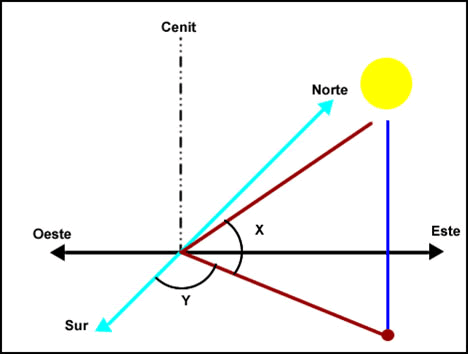We are witnessing an unprecedented growth of renewable energies participation in global energy matrix.
But why does the average citizen not perceive the benefits and feel somehow alien to this process ?
The main reason is that this participation is built on an already obsolete energy matrix paradigm.
The 3 pillars of the future energy matrix are:
1) Energy efficiency
In this element the consumer is the variable of greater weight.
The transformation is related to a energy consumption habits profound change. It is very difficult to happen in those countries with a high subsidy component in their energy tariffs.
The other important aspect and on which the states can directly act is the stimulus for more efficient devices acquisition.
The energy efficiency generates a lower demand and therefore a decrease of generation investment.

2) Renewable energies
In energy-importing countries (mostly in Latam) renewables development is an instrument to improve payments balance.
In any world country, a means to boost and make the economy more competitive.
Investment in a solar system is very high in countries that do not manufacture equipment compared to those that do.
Let us illustrate this with a concrete example: in the largest producer of solar modules (China) W FOB value is around US$ 0.50. That solar module placed outside destination country customs, for example Argentina, costs US$ 1.20 (+ 140%). If we add the commercial margin of the companies that sell and the companies that install them, the final consumer ends up paying US$ 2.50 / W (+ 400%).
The companies awarded renewable energy public tenders in countries where no equipment is manufactured do not pay import taxes for equipment and are exempt from most taxes.
It is a utopia the idea of short and medium term local equipment manufacturing if the country does not have the capacity to convert silicon to solar-grade silicon or technology to manufacture evacuated vacuum tubes. Especially if we consider the aggressive decrease in solar equipment price of last 5 years.

3) Distributed generation
Distributed generation systems surpass those of centralized generation in national security (attacks, warlike conflicts, etc.) and supply continuity (natural catastrophes and seasonal peaks cuts) questions.
Distributed generation is also a wealth redistribution way, giving consumer the opportunity to generate the energy he consumes and the possibility of obtaining an income from the surplus.
New energy infrastructure investments should be directed towards interconnecting and renewables integrating systems and abandoning the paradigm of an already obsolete energy matrix (distribution from centralized generation plants).
Efforts to develop large wind and solar generation should be redirected to distributed generation systems development.
Large plants should be only a complement, located only in locations where renewable resource potential is very high and take advantage primarily of rooftop and ceilings surface instead of being placed in soils that could have other uses.
Fingers and toes are enough to count worldwide renewable sector EPC companies of a certain scale projects.
These companies are itinerant. They land in countries with great potential where the ban is lifted.
In Europe the main countries of the itinerary were Spain, France, Italy and now United Kingdom.
In Latin America they went to Chile, Brazil, Mexico and now Argentina.
The myth that this type of projects generates a large number of stable jobs is false. The work is intensive only at construction time. Then the operation and maintenance of these plants is relatively simple and is done remotely with very little personnel on field.
We are not against renewable generation plants development, what we manifest is that the energy matrix paradigm is the one that is already obsolete.
The renewable resource generates energy where it is available. If we take advantage of it there, we avoid all expenses and eliminate all energy losses inherent to the distribution of that energy.
Stable jobs generation and sustainable economic renewable sector development go hand in hand with distributed generation and prosumer (residential, industrial and services) figure development.
Solar is the ideal renewable energy for distributed generation because it has the highest integration into urban environment level.

Countries that take the following steps to achieve the future energy matrix, will make their economy more competitive:
• Stimulating efficient devices acquisition (special financing, tax exemptions) or taxing non efficient devices acquisition
• Eliminate import taxes on renewable equipment inputs that cannot be manufactured in the short and medium term and focus industrial effort on imported inputs supplemented with local raw material inputs
• Give priority to distributed generation and prosumers creation over large generation power plants development
• Invest in interconnection and renewables integration energy infrastructure and gradually abandon the obsolete energy matrix (large power systems – distribution).
It is a long process but, like every great journey, it begins by taking a step.
Municipalities (in solar thermal energy) and Provinces (in photovoltaic solar energy) have the power to promote solar distributed generation development.
There are examples on which they can work to adapt to each local reality and to introduce improvements to avoid mistakes.
In distributed solar thermal energy, an example can be the Spanish Technical Building Code (CTE). An improvement to introduce to this referent could be the obligation of a periodic maintenance to verify the system good operation and to corroborate solar fraction required is reached.
In distributed photovoltaic solar energy, an example may be the net-metering regime of some US states (eg California). In this case, the implementation of complementary financial tools (special financing, leasing), that have promoted its great development, could be imitated.
Conditions (political and economic stability) must be created for desired events to occur.
Reality cannot be modified by laws.
For example, if a Latin American province has regulations to promote distributed generation since 2013 and in 3 years have connected 10 systems, it means that we are doing something wrong.
As in all life aspects of any individual or society, goals must be set (ambitious but at same time achievable) in order to achieve success, deadlines must be set and periodic measurements must be made to introduce improvements and correct errors.
This is very difficult if long-term energy policies that surpass current government are not adopted.
For now, short term rules.
It is easier to sit down with a few to negotiate and cut tapes for the photo, than work seriously and in the long run for general interest.
Solar energy wherever you are with Sopelia.































